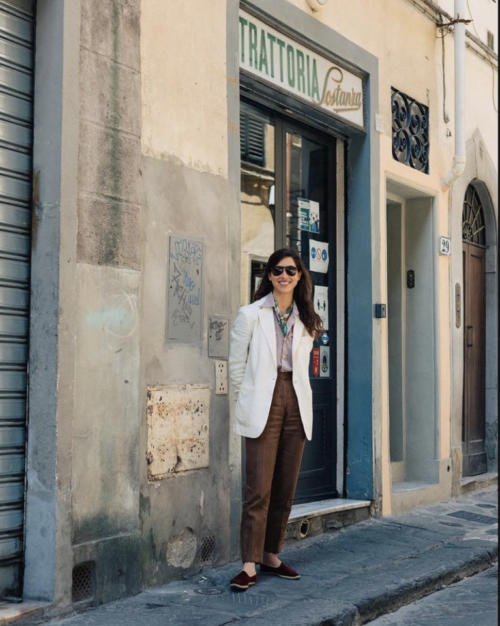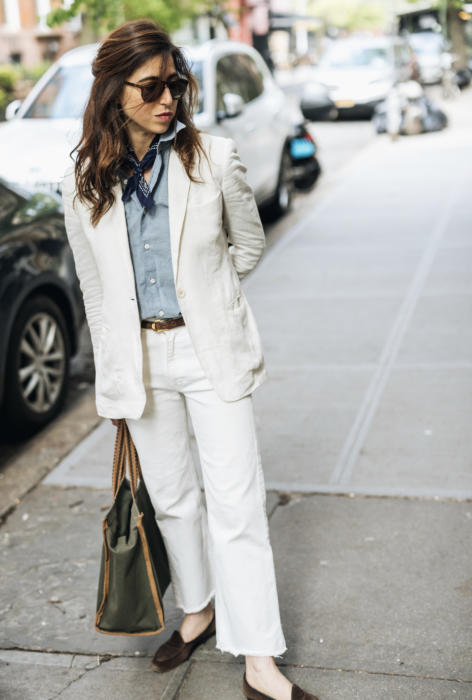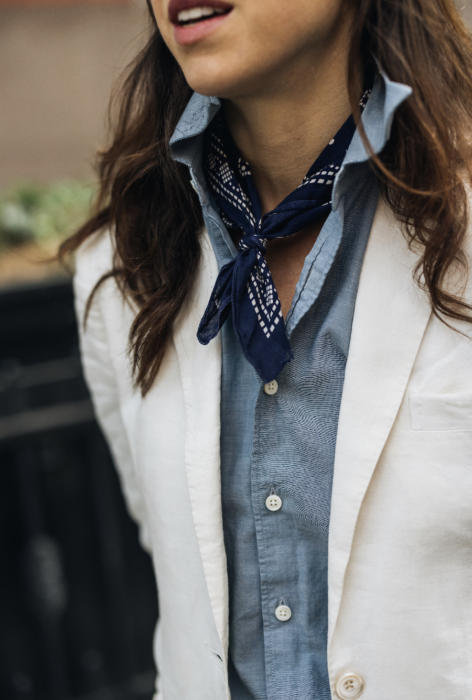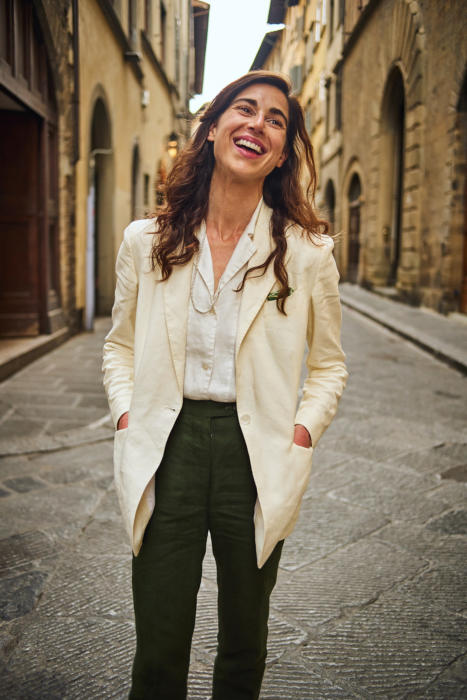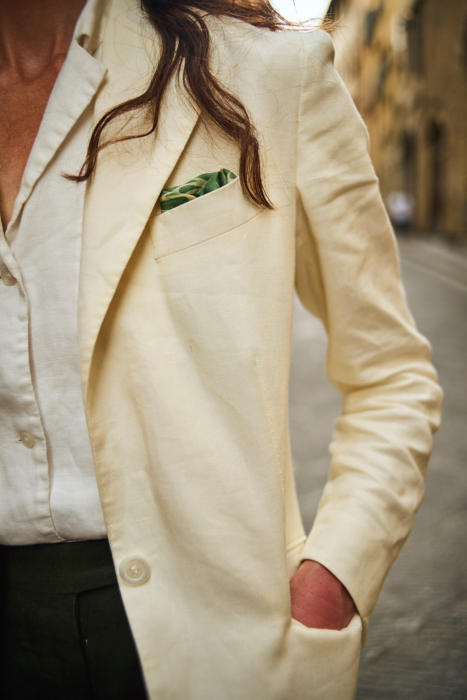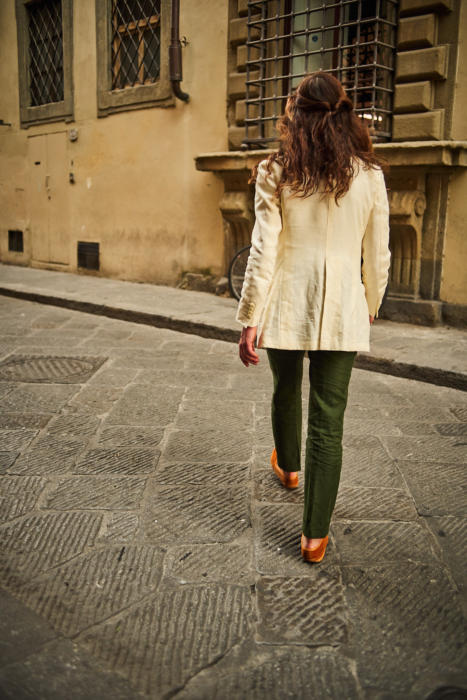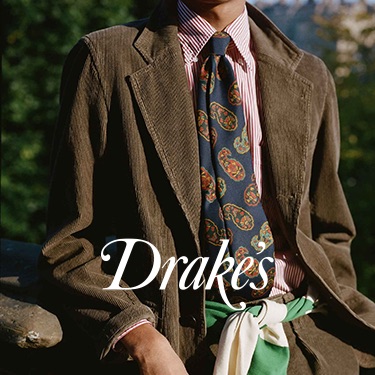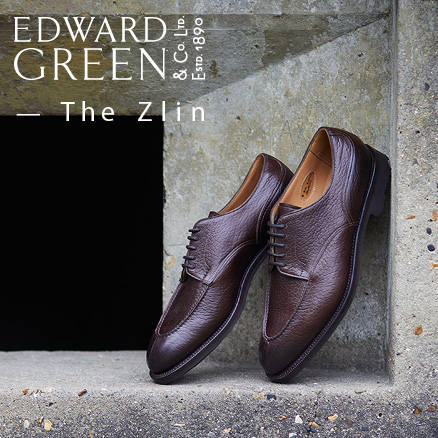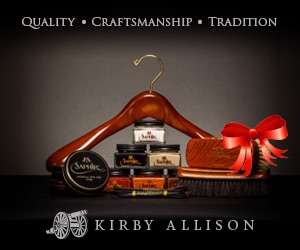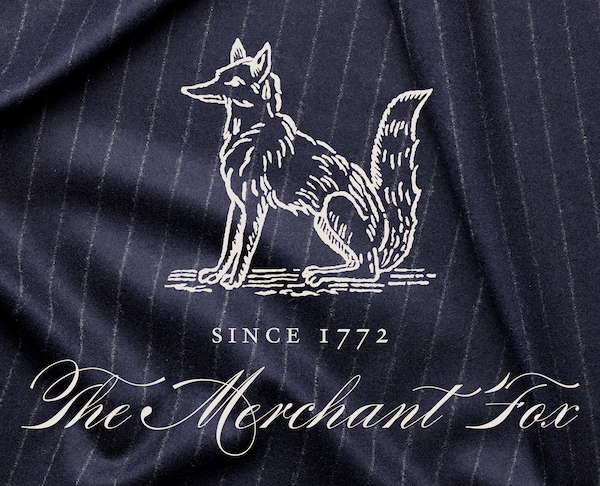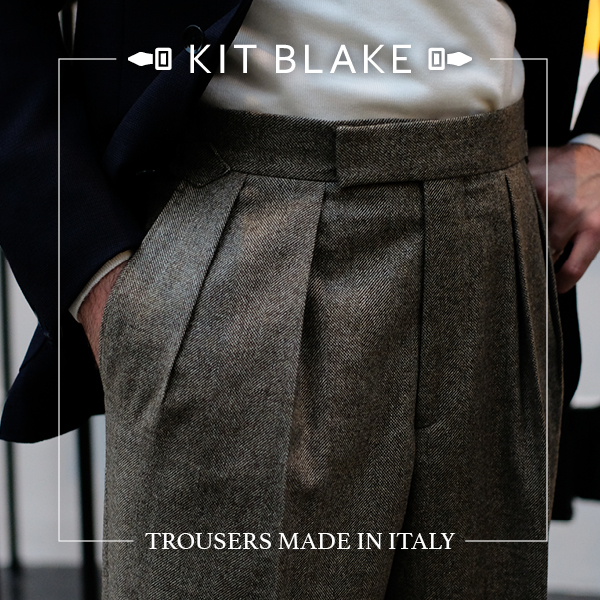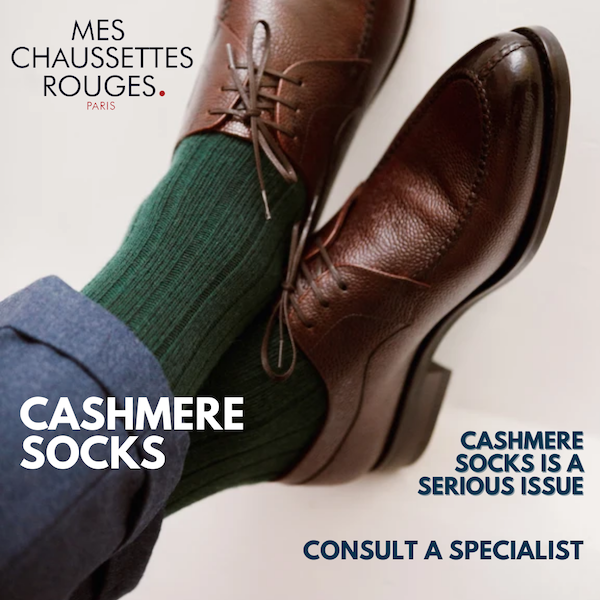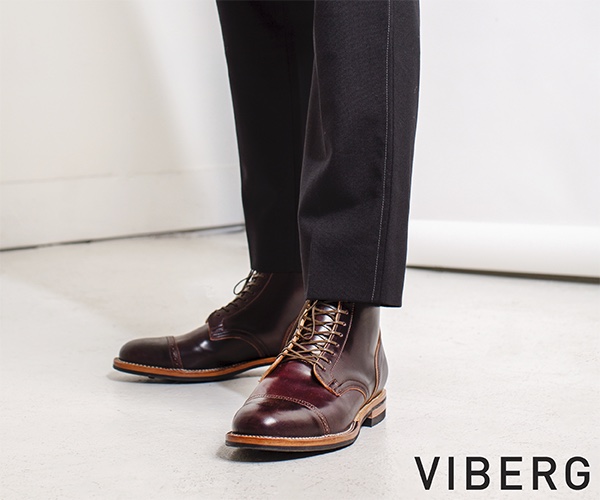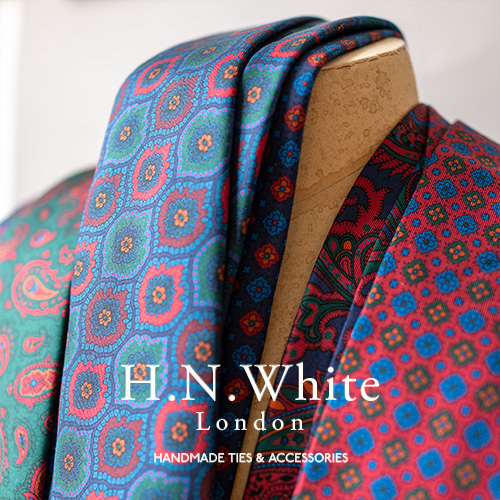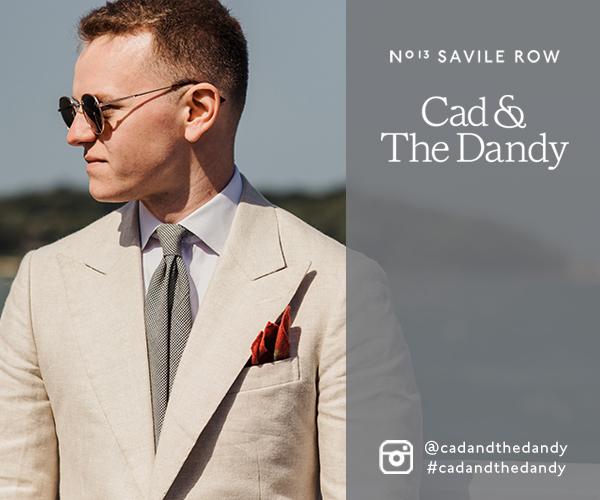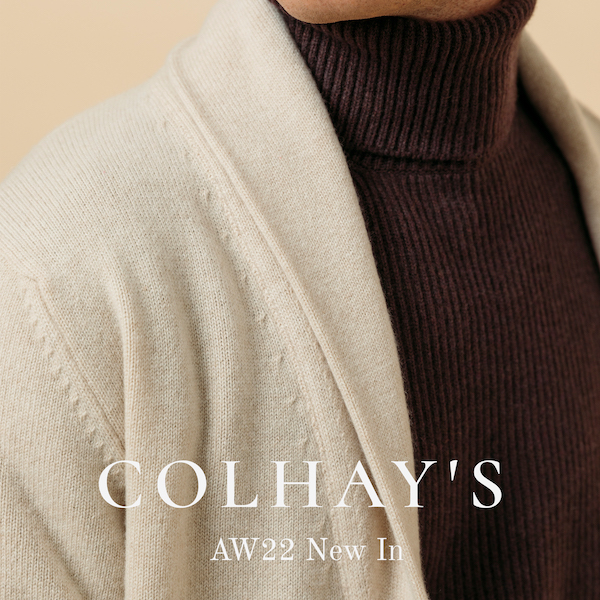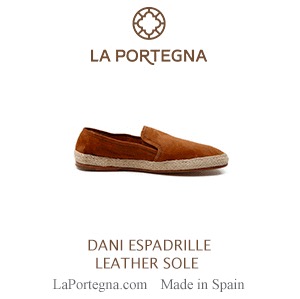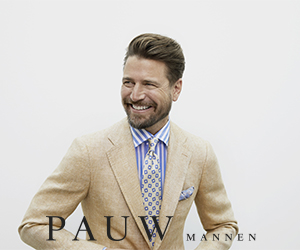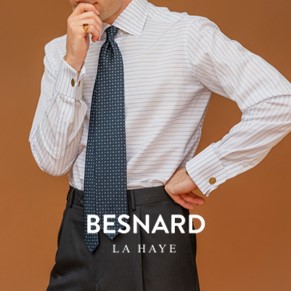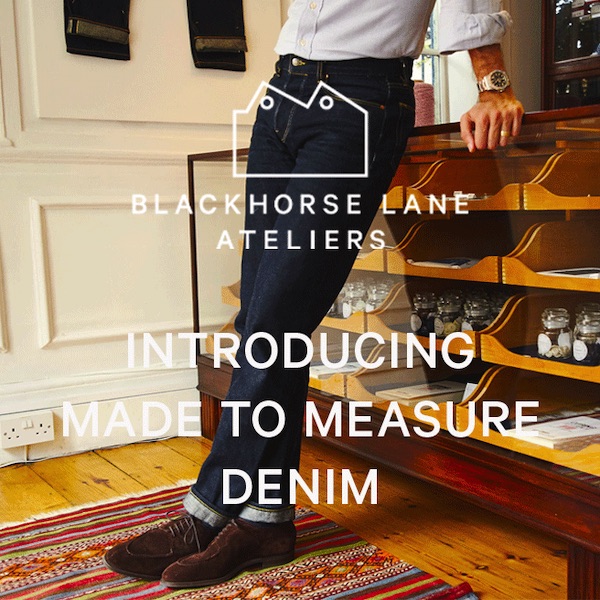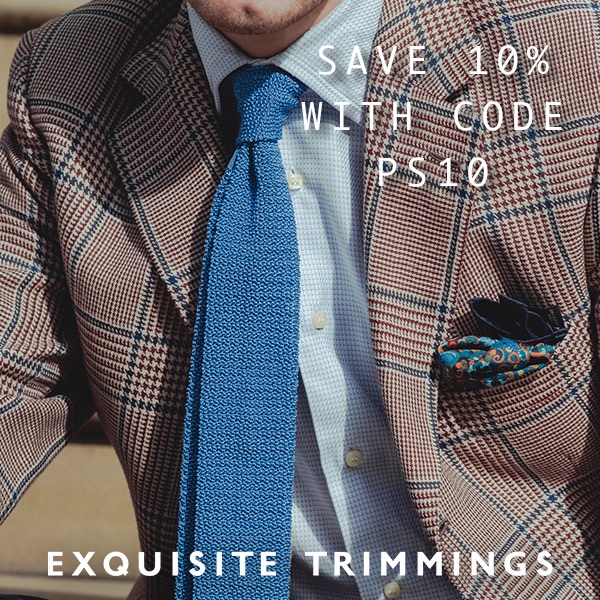Women and clothes: An interview with Emilie Hawtin
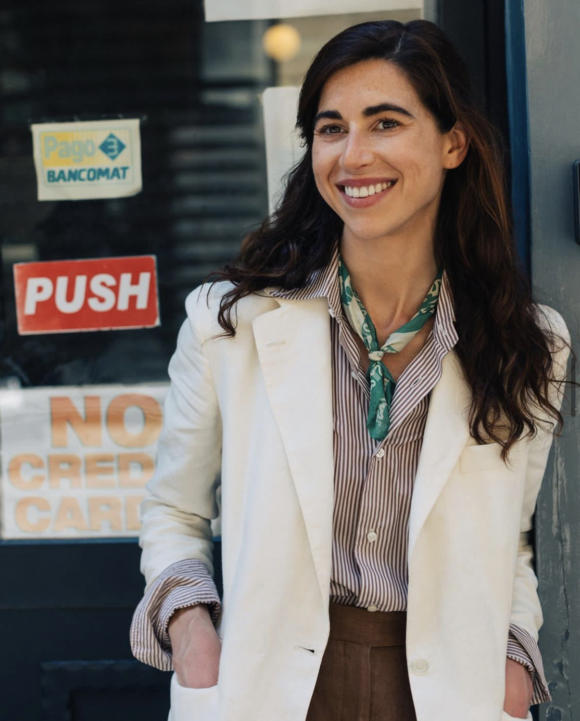
It’s not uncommon to hear men complain that they don’t know what to wear anymore, particularly to the office. Or that there aren’t any good mid-market brands, just cheap high-street and high-end luxury. But no matter what our issues, women have it worse.
The expectations, the never-ending trends and the lack of quality makers all make it harder. Friends and female PS readers have always bemoaned this - and one such conversation with a friend who works in fashion, Emilie Hawtin, seemed particularly revealing.
So we talked again, to discuss the issues further, and to reproduce elements for Permanent Style. I hope it makes you grateful.
PS: Thanks for joining us Emilie. Perhaps let’s start with the kind of expectations you feel there are on women in how they dress.
EH: Sure, and thanks for having me Simon. I think part of the problem is women are fed so many mixed messages. You’re expected to be professional, but also feminine; to fit with the trends, but also to have your own sense of style.
Then there are the dress codes, what men might call ‘rules’. Like uniforms for certain occasions, the expectation to wear a dress to a wedding, the length of dress, how bare it can be, not competing with the bride. Then there’s your hair, your make-up. So much more than just a suit and tie.
With the mixed messages, it sounds like there’s a kind of a tug-of-war between them, because some are naturally opposed - like appearing feminine but fitting in with more traditional office attire.
Exactly. Perhaps the worst from your point of view might be newness - the pressure to always have something new to show, for others to admire.
Men are often encouraged to buy fewer clothes and to buy better. It’s OK, even admirable, to have an old pair of shoes that you polish and take care off, that show their age. But all the messaging that women get is to buy new.
So if you don’t, it can make you feel self-conscious and even considered boring - or perhaps rebellious, but that might not be the impression you want.
It’s an expectation that’s hard to get away from, because it’s existed for so long. Men have always dressed in some kind of mutually agreed uniform, whereas women have been portrayed as staying in the home, and then shopping as a kind of hobby. It’s been seen as something we like to do.
I suppose the knock-on effect is that there aren’t many brands offering quality clothing, because they have to change their designs all the time - they can’t offer something season after season.
Absolutely. There are some of course, but even with the growth of menswear in the past 20 years, women’s clothing is 70% or so of the turnover at most businesses, because of that expectation of newness.
There are more consistent brands, like Margaret Howell perhaps, but it’s a name you have to search for, or be told about. And you have to live somewhere that has a lot of stores for those more specialist places to be accessible.
It also means there aren’t the resources to talk about more classic clothing - like Permanent Style - because of the lack of brands to support them.
That point about awareness was interesting. Do you think women’s brands need a certain amount of advertising spend to make make enough people aware of them?
Yes, I think that’s the reason some small quality brands don’t succeed. When the industry standard is magazine advertising, and inclusion in editorials, it’s what women come to expect - even in the age of social media.
Women are also used to being shown how to wear things. They’re more visual. A men’s brand can succeed with just images of the product, and information about how it’s made. Women’s clothing needs more styling, better imagery. I think that’s one reason the women’s offerings from men’s brands often aren’t well known.
Of course, the problem is that all this advertising and styling puts up the costs, and so the prices. It becomes harder to spend more on the product.
When you mentioned the mixed messaging earlier, I presume you meant more than just advertising, which can be ignored to an extent?
Yes - it’s the magazines and their editorial of course, or how people talk about newness on social media. But there’s also social pressure.
Women are more likely to get ready together, more than men. There’s a big element that's about dressing for each other, for your friends.
Does the messaging about what is feminine, or what is professional, also change with fashions?
Yes certainly, that’s one more layer. So feminine at the moment might be about details like puffy sleeves, that more romantic element. But I feel ridiculous if I wear that.
How have you personally come to coped with these pressures?
It’s been a long journey. I think it starts with paying attention to different things, different information. So realising what media you consume and perhaps being more considered. Then it’s about thinking about what makes you feel good. Which clothes make you confident and yourself.
I’ve found, for example, that if I put on a crisp Turnbull & Asser shirt I feel ready for anything. Which also then makes me feel at ease. But that’s not the same in a wrinkled linen shirt, even if it’s cooler to wear.
It requires quite a lot of self-knowledge, which comes with time and experience. But it's fairly quick to stop looking outward, to stop following all those Instagram accounts and focus on how you feel in clothes instead.
It reminds me of the uncertainty men feel with the disappearance of the suit from office wear. There are fewer expectations of course, but it’s also a new experience.
That’s true. Things are more fluid these days, for men and for women. There’s a lot of freedom, which is great, but I think freedom also has a lot of men reverting to the easiest thing they can wear - just because it means they don’t have to think about it.
Everything has to start with what makes you feel most like yourself. That’s what people are talking about when they say ‘oh you could pull that off, but I couldn’t’. Someone else can pull it off because it feels like them.
But isn’t it also the case that you can become comfortable in something over time - that it can ‘become’ you? How do you draw that line?
Yes that’s hard. For example the first time I wore the white linen suit above, I frankly felt pretty overdressed.
I felt great in one sense, in that it fit me really well, and I started to realise how much I like being a little buttoned up - wearing clothes that I can feel on me. But it took me a few tries to work out how I liked it.
For me the best thing was wearing it every day, so it very quickly became a little beaten up, a little softer, and I became used to it. I wore the jacket on its own, the trousers on its own, and it began to feel like me.
It’s interesting that you found you preferred that type of closer fitting clothing as well.
Yes I think that was just as big a part of this journey. I find that I value a true waistband. Even if I’m on the coast I’ll wear a linen trouser, and not one with drawstring - something you button into.
I find that kind of unstructured but fitted clothing gives me a type of confidence, and I feel comfortable in it wherever I am in the world.
I have to say, a lot of this is pretty refreshing, given male readers often seem to worry that they’re overthinking things.
Oh absolutely. That’s just as much the case for women, at least for ones I know. There is so much thinking, trying and rethinking.
I know when I started wearing suits more, particularly to events, I had a lot of anxiety about getting dressed. It would drive me crazy, it would drive my partner crazy: was this me, was this appropriate?
But then if you wear something else, that is less your style, you often don’t feel great in it. You’d be wearing a piece of clothing because you felt it was expected, or on-trend. You’d have spent a good amount of money, but you wouldn’t enjoy what you were wearing.
So many women talk about that - how bored they feel with their wardrobes, even though they have all these clothes.
So many choices, yet so little freedom. Why does this end up being much cheaper clothing as well?
Because if you’re not focusing on what you like to wear, and just consuming what’s around you, you never get a chance to buy better. It’s only when you have a little capsule wardrobe that you can then start upgrading things, or buying things that work with everything else.
I had lots of jobs where I’d feel a pressure to dress for that environment, even if it wasn’t me. Such as being at a big luxury brand and having to wear that kind of clothing. Which would then be inappropriate anyway in the rest of my life.
Whereas a man could wear a suit - in some form - almost anywhere. Or at least some very simple combination of clothes.
Exactly, that’s something men need to hold onto.
Of the many things this discussion makes me feel, one is definitely an appreciation for the suit - even it’s a casual suit, like a linen or a cord.
Oh God, yes hold onto that for all it’s worth. And try encourage more women to start wearing them too.
Thank you Emilie. That feels sufficiently on-message to end on. It’s been a pleasure.
For me too Simon, thank you.
Emilie Hawtin is an editorial director and style commentator, based in New York. The suit she is wearing is a cream linen from J Mueser - the ‘Clementina’.
Photography: First outfit, Milad Abedi; second, Chris Finamore; third, Todd Ritondaro)
Related posts
from Permanent Style https://ift.tt/J1tFKaP
via IFTTT
